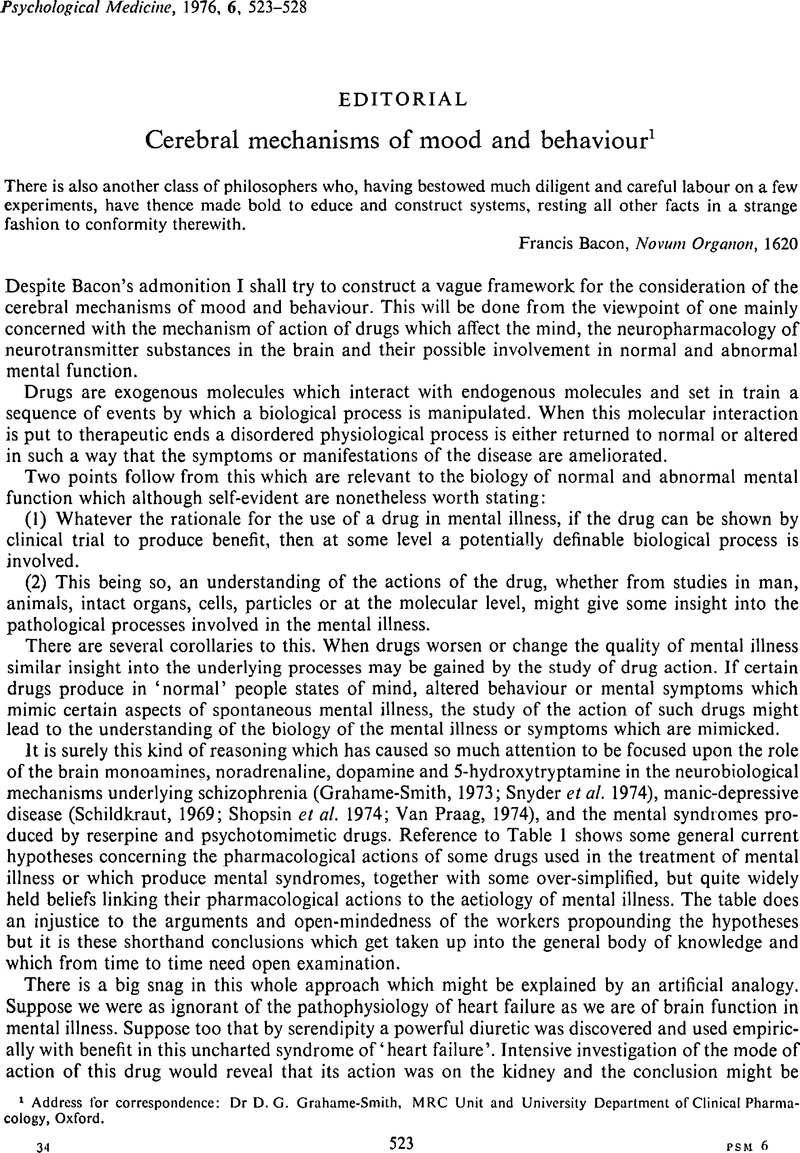Crossref Citations
This article has been cited by the following publications. This list is generated based on data provided by Crossref.
Cookson, J C
and
Silverstone, T
1977.
Neurochemical and Psychoanalytical Approaches to Mania.
Proceedings of the Royal Society of Medicine,
Vol. 70,
Issue. 10_suppl,
p.
20.
Sale, Ian
and
Kristall, Henry
1978.
Schizophrenia following Withdrawal from Chronic Phenothiazine Administration: A Case Report.
Australian & New Zealand Journal of Psychiatry,
Vol. 12,
Issue. 1,
p.
73.
Marsden, C. D.
1979.
Ciba Foundation Symposium 69 ‐ Brain and Mind.
Vol. 69,
Issue. ,
p.
305.
Smith, Graeme C.
and
Copolov, David
1979.
Brain Amines and Peptides—Their Relevance to Psychiatry.
Australian & New Zealand Journal of Psychiatry,
Vol. 13,
Issue. 4,
p.
283.
Grahame-Smith, D.G.
1979.
The effects of drugs on the processes regulating the functional activity of brain monoamines.
Progress in Neuro-Psychopharmacology,
Vol. 3,
Issue. 1-3,
p.
15.
Strian, F.
Albert, W.
and
Klicpera, C.
1979.
Course of depressive mood and psychomotor activation in endogenous depression.
Archiv f�r Psychiatrie und Nervenkrankheiten,
Vol. 227,
Issue. 3,
p.
193.
Shepherd, M
1981.
Psychiatric research in medical prespective..
BMJ,
Vol. 282,
Issue. 6268,
p.
961.
Shepherd, Michael
1982.
Psychiatric research in medical perspective.
Archiv f�r Psychiatrie und Nervenkrankheiten,
Vol. 232,
Issue. 6,
p.
501.
Clare, Anthony W.
1983.
Psychiatric and social aspects of premenstrual complaint.
Psychological Medicine. Monograph Supplement,
Vol. 4,
Issue. ,
p.
1.



